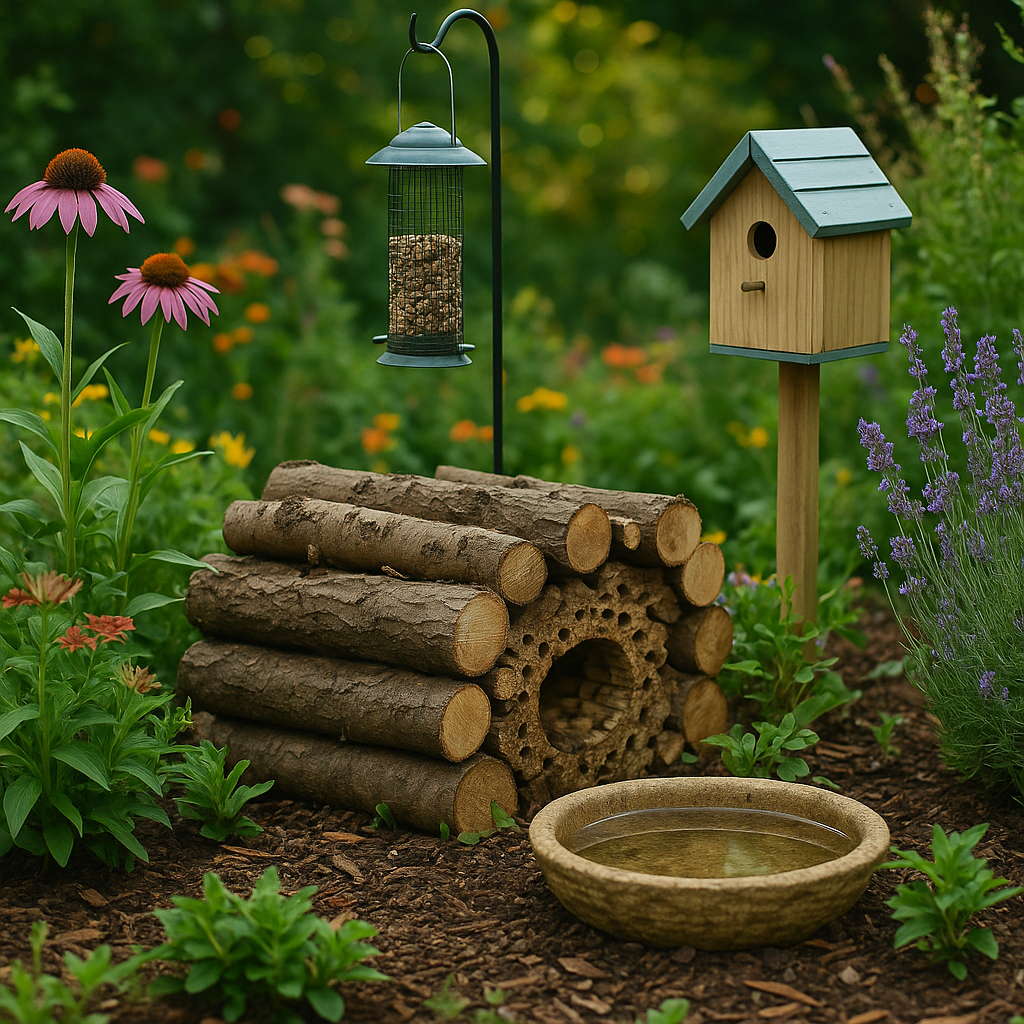Creating a garden that is both beautiful and beneficial to the environment is no longer just a passion project—it’s a responsibility. The Bright View Landscape philosophy embraces eco-conscious landscaping practices that enhance local biodiversity, provide year-round habitats for wildlife, and deliver a stunning outdoor space for homeowners.
From planting native flowers that attract pollinators to designing multi-layered habitats for birds, insects, and small mammals, the approach combines aesthetics with ecological purpose. Whether you’re in the early stages of redesigning your garden or looking to improve your current layout, these strategies will help you create a thriving wildlife-friendly haven.
Why Wildlife-Friendly Landscaping Matters
A wildlife-friendly garden is more than just a pretty view—it’s an active ecosystem. By integrating native plants, safe shelter, and reliable food and water sources, you’re supporting the survival of local species and encouraging a balanced, self-sustaining environment.
The Bright View Landscape commitment to sustainability ensures that landscapes do more than look good—they actively help the environment. Whether it’s a small backyard transformation or a large estate makeover, these principles ensure your garden becomes a living, breathing sanctuary.
Understanding the Core Needs of Wildlife
1. Food Sources
Native plants are essential for providing the correct nutrients for local wildlife. These plants have evolved alongside native species, making them the perfect source of food for birds, butterflies, bees, and small mammals. Bird feeders filled with seeds, nuts, and suet can supplement natural food supplies, especially during the winter months.
Adding water features like bird baths or small ponds attracts not only birds but also amphibians and beneficial insects. This integration creates a balanced ecosystem where every species plays its part.
2. Shelter and Nesting Sites
Wildlife thrives when it has safe places to rest and breed. Birdhouses, hedgehog shelters, and insect hotels offer secure nesting sites that protect animals from predators and harsh weather. Planting dense shrubs and trees can provide natural shelter, creating a harmonious blend of form and function.
Bright View Landscape projects often use layered planting—combining canopy trees, understory shrubs, and ground cover—to maximize biodiversity and visual appeal.
3. Water Sources
Access to clean water is vital year-round. Bird baths, shallow ponds, and mini streams give wildlife a place to drink and bathe. In winter, keeping water sources unfrozen ensures survival during harsh conditions.
The placement of water features matters—open areas are ideal for birds to monitor predators, while shaded zones help reduce evaporation during summer.
Choosing Plants That Support Wildlife
Native Plants
Native plants are the cornerstone of any Bright View Landscape wildlife project. They adapt easily to local soil and climate, require less maintenance, and attract native pollinators.
Some recommended species include:
- Lavender – a bee magnet
- Milkweed – critical for monarch butterflies
- Coneflowers – beloved by bees and butterflies
- Serviceberry – provides berries for birds
Pollinator-Friendly Choices
Pollinators are essential for healthy ecosystems. Integrating plants that bloom at different times ensures continuous nectar availability. Early bloomers support pollinators in spring, while late bloomers keep them nourished into autumn.
Fruit-Bearing Plants
Bright red holly berries in winter or clusters of elderberries in summer provide vital food sources when other options are scarce. Fruit-bearing plants are an attractive way to keep your garden productive for both people and wildlife.
Creating Diverse Habitats
A well-designed wildlife garden uses variety to attract a wide range of species.
- Woodland Areas – Combining canopy trees, shrubs, and ground plants creates vertical diversity that shelters birds and mammals.
- Water Features – Ponds, streams, and bird baths add life and movement to the garden.
- Rock Gardens & Log Piles – Offer microhabitats for reptiles, insects, and amphibians.
These techniques work hand-in-hand with larger garden features. For instance, when installing heavy decorative pieces, tools like a jib crane can make placement safer and more precise.
Installing Wildlife-Friendly Features
- Bird Feeders & Houses – Place them at varying heights to cater to different species.
- Hedgehog Houses & Insect Hotels – Protect beneficial animals while adding a decorative element.
- Log Piles & Rock Borders – Mimic natural habitats to attract shy or reclusive species.
A thoughtfully arranged Bright View Landscape not only supports wildlife but also enhances the garden’s year-round interest.
Seasonal Maintenance for a Wildlife-Friendly Garden
Spring – Plant early-blooming natives, clean feeders, and refresh mulch.
Summer – Keep water sources topped up, prune carefully, and ensure feeders stay stocked.
Autumn – Plant late-season flowers, create leaf piles, and prepare shelters for winter.
Winter – Maintain unfrozen water, provide high-energy bird food, and leave seed heads on plants for natural feeding.
For a deeper look at sustainable garden care, explore Bright View Landscape | Eco-Friendly Designs for Modern Yard.
Blending Functionality with Beauty
Wildlife gardens can be stylish as well as functional. Incorporating durable surfaces, stone seating, or outdoor kitchens can be done in harmony with nature. For example, pairing native plantings with a handcrafted bench that complements your Granite Countertop Installation creates a luxurious yet natural feel.
Similarly, architectural features like glass walls or sunrooms can benefit from insights in the Insulating Glass Unit Guide for Architects and Builders—offering beauty, comfort, and energy efficiency.
Transparency and Trust in Landscaping Services
Homeowners often wonder, Is Bright View Landscape Transparent About Its Service Pricing? Knowing exactly what you’re paying for builds trust and ensures your investment in wildlife-friendly landscaping delivers maximum value.
Conclusion: Landscaping with Purpose
The Bright View Landscape approach shows that you can create a stunning garden while supporting local biodiversity. By prioritizing native plants, adding shelter and water sources, and maintaining seasonal care, you can turn your outdoor space into a thriving ecosystem.
For more inspiration, see Bright View Landscape Supporting Local Wildlife and start planning your garden transformation today.

